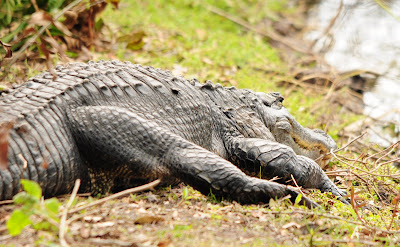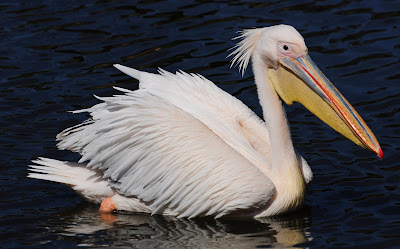 Blue grey gnatcatcher
Blue grey gnatcatcher Northern mockingbird
Northern mockingbird My first yellow rumped warbler sighting.
My first yellow rumped warbler sighting.
 Blue grey gnatcatcher
Blue grey gnatcatcher Northern mockingbird
Northern mockingbird My first yellow rumped warbler sighting.
My first yellow rumped warbler sighting.
 The Burrowing Owl above was photographed at the Cape Coral Library in February 2010.
The Burrowing Owl above was photographed at the Cape Coral Library in February 2010. The Burrowing Owl above was photographed at the Cape Coral Library in February 2010.
The Burrowing Owl above was photographed at the Cape Coral Library in February 2010. The Burrowing Owl above was photographed at the Cape Coral Library in February 2010.
The Burrowing Owl above was photographed at the Cape Coral Library in February 2010. The Burrowing Owl above was photographed at the Cape Coral Library in February 2010.
The Burrowing Owl above was photographed at the Cape Coral Library in February 2010. The Burrowing Owl above was photographed at the Cape Coral Library in February 2010.
The Burrowing Owl above was photographed at the Cape Coral Library in February 2010. The Burrowing Owl above was photographed at the Cape Coral Library in February 2010.
The Burrowing Owl above was photographed at the Cape Coral Library in February 2010. The Burrowing Owl above was photographed at the Cape Coral Library in February 2010.
The Burrowing Owl above was photographed at the Cape Coral Library in February 2010. The Burrowing Owl above was photographed at the Cape Coral Library in February 2010.
The Burrowing Owl above was photographed at the Cape Coral Library in February 2010. The Burrowing Owl above was photographed at the Cape Coral Library in February 2010.
The Burrowing Owl above was photographed at the Cape Coral Library in February 2010. The Burrowing Owl above was photographed at the Cape Coral Library in February 2010.
The Burrowing Owl above was photographed at the Cape Coral Library in February 2010. The Moon above was photographed at the Cape Coral Library in February 2010.
The Moon above was photographed at the Cape Coral Library in February 2010. The Burrowing Owl above was photographed at the Cape Coral Library in February 2010.
The Burrowing Owl above was photographed at the Cape Coral Library in February 2010.
 This lone white pelican was flying around. They are usually with large groups so I'm not sure where the rest of his friends where.
This lone white pelican was flying around. They are usually with large groups so I'm not sure where the rest of his friends where.This turkey vulture was showing off.
I took a long walk around Boyd Hill Park in St. Petersburg this past Saturday. The day started off windy, a little cool and cloudy with a chance of rain. There didn't seem to be a lot of birds around. I ran into a couple from England who came over for a couple of weeks for vacation and they asked me where were all the birds. He had a camera with him and said they come every year at this time and in the past the parks have all been full of big water birds. He said they had not seen a lot of birds anywhere they had been since middle of January. I have been asking myself the same question. I'm assuming the much colder than usual temperatures has pushed them further south. I'm not sure if south Florida is seeing an influx of birds more than usual. Hopefully once the weather warms up a bit for a while the big birds will show up again.
 This anhinga caught a big fish. They must have really expandable necks because he swallowed this whole after banging it around on the branch a few times.
This anhinga caught a big fish. They must have really expandable necks because he swallowed this whole after banging it around on the branch a few times.
 Palm warbler sitting in the bush.
Palm warbler sitting in the bush.



Occasionally a bird gets too close to a hungry alligator. I heard the splashes and looked over to see this alligator swimming around with his prize lunch.
There are two main things you see at Gatorland - lots of big alligators and big wild water birds. For the most of time they seem to co-habitat well together. The birds hang around the ponds at Gatorland to catch crumbs of the food being fed to the alligators and because there is lots of fish in the ponds for them to eat. The alligators keep away raccoons that would eat the bird eggs. I did happen to catch nature happening while I was there when an alligator must have been hungry and a bird got lazy and too close. It's a sad circle of life.
 Doing a mating dance.
Doing a mating dance. Sitting on the nest. There aren't any babies yet but they will be coming soon.
Sitting on the nest. There aren't any babies yet but they will be coming soon. These two egrets were courting each other for a while.
These two egrets were courting each other for a while.
 The scene above was photographed at Wakodahatchee Wetlands in February 2010.
The scene above was photographed at Wakodahatchee Wetlands in February 2010. The alligator above was photographed at Wakodahatchee Wetlands in February 2010.
The alligator above was photographed at Wakodahatchee Wetlands in February 2010. The Cattle Egret above was photographed at Wakodahatchee Wetlands in February 2009.
The Cattle Egret above was photographed at Wakodahatchee Wetlands in February 2009. The Black-bellied Whistling Duck above was photographed at Wakodahatchee Wetlands in February 2010.
The Black-bellied Whistling Duck above was photographed at Wakodahatchee Wetlands in February 2010. The Double-crested Cormorant and juveniles above were photographed at Wakodahatchee Wetlands in February 2010.
The Double-crested Cormorant and juveniles above were photographed at Wakodahatchee Wetlands in February 2010. The Hooded Merganser above was photographed at Wakodahatchee Wetlands in February 2009.
The Hooded Merganser above was photographed at Wakodahatchee Wetlands in February 2009. The Wood Stork above was photographed at Wakodahatchee Wetlands in February 2010.
The Wood Stork above was photographed at Wakodahatchee Wetlands in February 2010. The wildlife enthusiast above was photographed at Wakodahatchee Wetlands in February 2010.
The wildlife enthusiast above was photographed at Wakodahatchee Wetlands in February 2010.
As I was leaving the zoo this past weekend I noticed 3 sandhill cranes walking down the street away from the zoo. I turned back around into the parking lot of the zoo and parked my car at the end near the street. I got out and sat down in the parking lot near the grass and watched the cranes walk around. They didn't seem too disturbed by me. They just kept eating and walking around. Every once in a while they would look over at me. It's not very often you see sandhill cranes walking down a busy street in Tampa. My husband claims he sees them on the golf course all the time (although he doesn't play that much golf).




The Lowry Park Zoo has a handful of beautiful white pelicans that live in the big aviary in the African section of the zoo. They fly back and forth across the pond several times a day and stay together in a flock just like they do in the wild. This past weekend I happen to be there when they were being fed. They were so graceful the way they lined up and then caught the fish. There were a few cormorants braving the crowd looking for some crumbs.